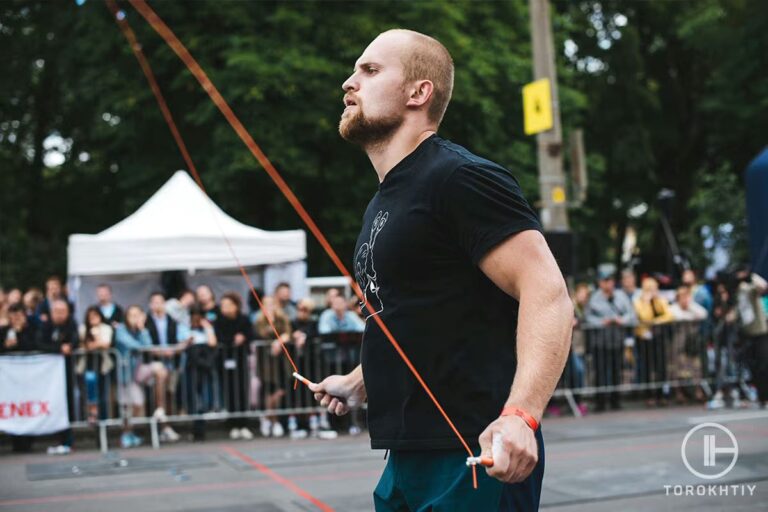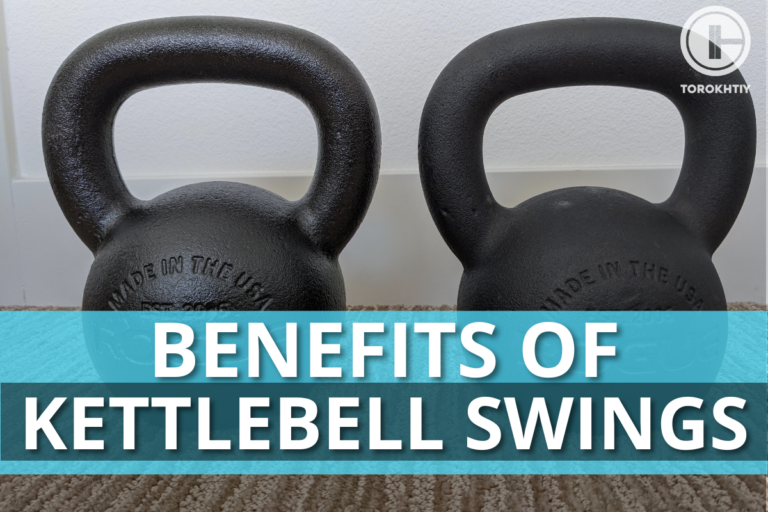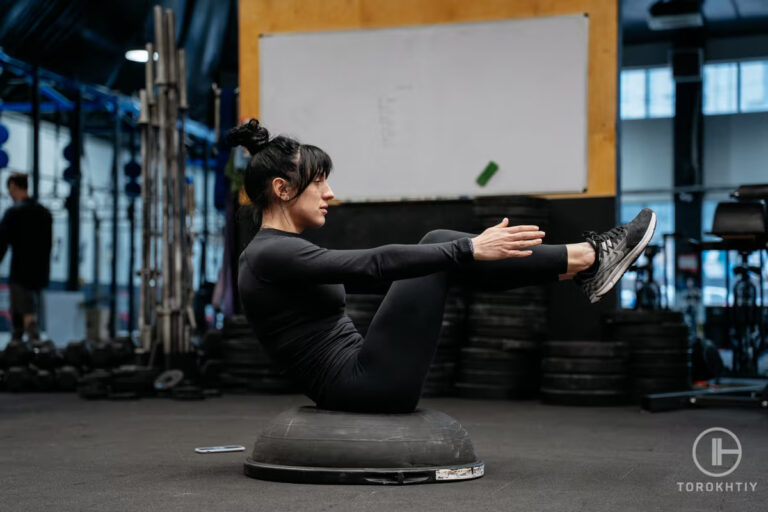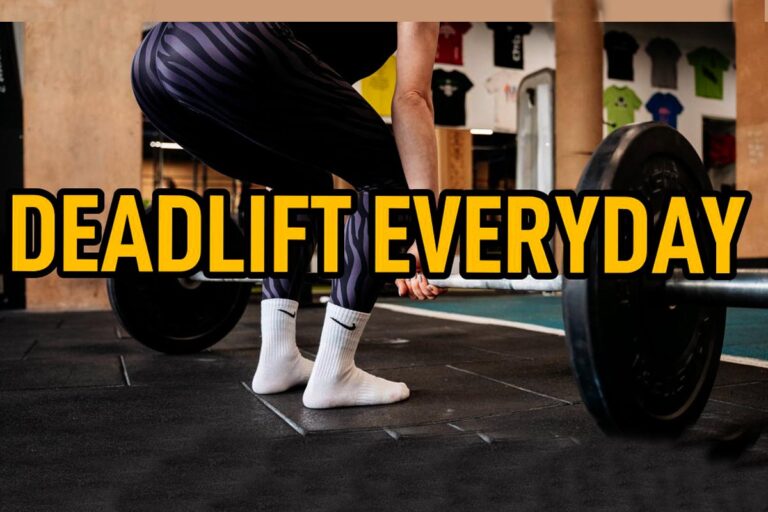How to Criss Cross Jump Rope
The criss cross jump rope is a fun way to mix up your cardio routine. But if you’ve never done it before, it can get tricky to get started. In this article, we cover the different things you should know about how to criss cross jump rope.
So how to criss cross jump rope? Begin with your jump rope behind you with your arms apart and forearms crossed in front of you. Try to touch your elbows or forearms. Then, from the side, pull your arms forward, swing the jump rope back and over using your wrists, and jump through the cross.
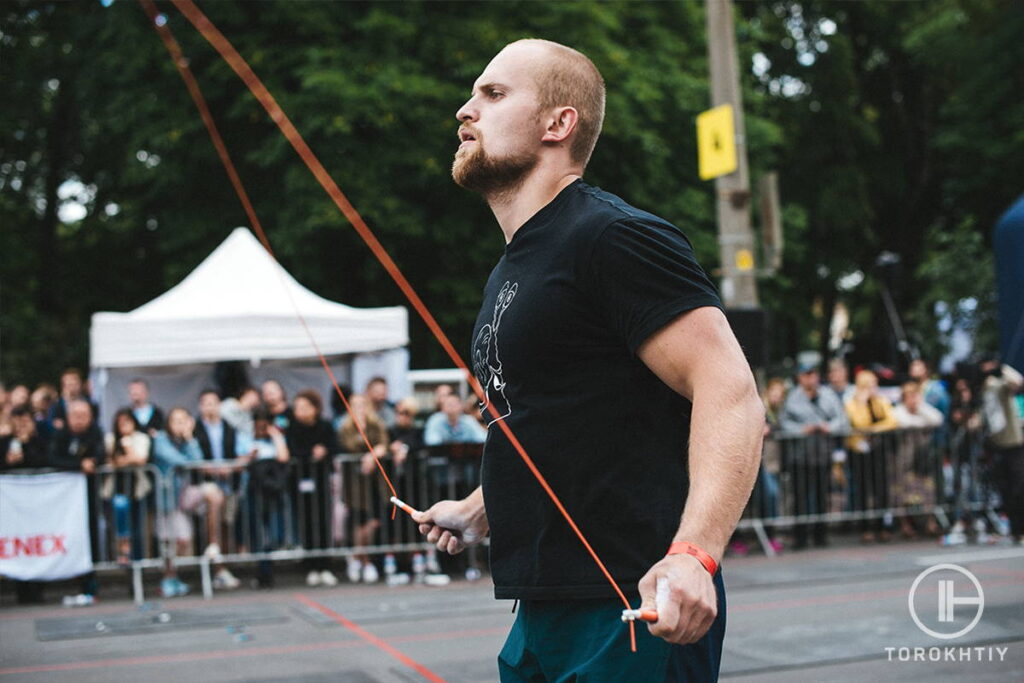
What is Rope Jump Crossing?
A rope jump crossing, or a criss cross jump, is a popular jump rope exercise where the arms are crossed as you jump. It can be a lot more difficult than the normal jump rope routine, but it’s also much more rewarding and fun to do. While learning how to perform a criss cross will require patience and practice, it’s an excellent way to work on your cardio, upper and lower body strength, and coordination.
Tips on How to Cross Jump Rope Right
The first thing you’ll need to do is practice jumping without the rope. This will help you get a feel for how to cross over your body with each jump. When learning how to cross jump rope, keep in mind that shadow crossing and crossing over too far are mistakes that can throw off your timing.
Get Your Arm Position Right
It is vital that you get the arm position right in a criss cross jump. To start, place the rope right in front of you and cross your arms at the elbow. You should then try to touch your elbows as you cross them over each other. This will create a bigger space for you to jump through so that when you bring your legs back to land on both feet, they are not too close together.
You want your arms close to your body, which makes it easier for the rope to move across your body at an angle (the criss-cross pattern). Once you get the hang out of this, you may progress by crossing at your forearms instead of your elbows which feels more comfortable, but a bit trickier initially, for most people.
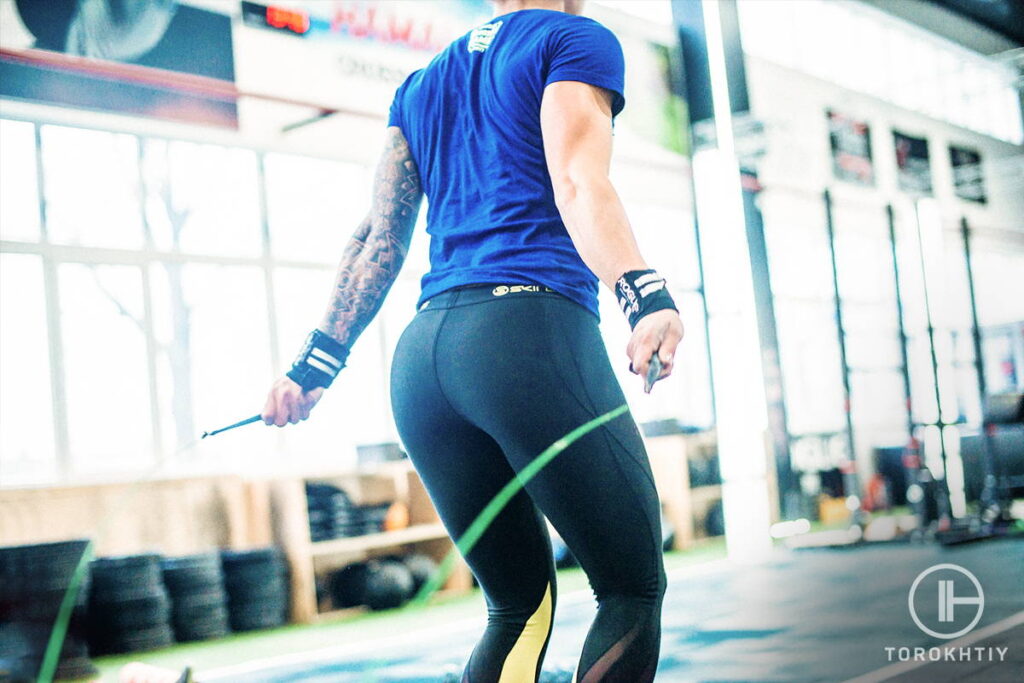
Start Properly
The next thing you’ll want to do is start in the proper position. Your jump rope should be behind you, with both hands on the handles and your arms apart. From your side, pull your arms a bit forward. This will allow you to get into a strong starting position as well as provide an easy transition into criss cross jumps.
Swing the Rope and Jump Through
The next step is to swing the jump rope from the back to over your head until it comes to a full circle. When this happens, take one jump through the cross. It’s important that you have your arms crossed before the rope hits the floor! If you pull them apart too early, then you’ll end up losing control of where they go and will have to start over again.
You should also be mindful not to shadow-jump while doing criss-cross—if you do this, it will not look like the criss-cross we are going for.
Use Your Wrists
One key factor to a successful criss cross jump rope is strong and stable wrists. If it helps, try practicing with your wrist movements and jump rope swings without jumping first. Remember: don’t pull your arms apart no matter what—unless you want to come out of the jump rope cross. The movement should be primarily coming from your wrist, not your shoulders or elbow.
Exercises for Criss Cross Rope Jumping
To get the most out of this workout, you’ll want to practice criss cross rope jumping at home or in the gym several times per week. Here are some exercises that can help improve your criss cross rope jumping skills:
Coordination Drills
A good way to improve your jump rope coordination is through coordination drills. These drills will help improve your ability to jump rope and also prepare you for more advanced moves.
Here are some examples of different types of coordination drills:
- Skipping without a rope
- Jumping over cones
- Jumping over the same hand or foot on each side
- Quick feet
- Lateral quick feet
Squat Jumps
Stand with feet shoulder-width apart and hands on hips, then squat down until your knees are bent at 90 degrees and explode upward by jumping off the floor as high as possible. Land softly in the starting position.
Tuck Jumps
Stand with feet shoulder-width apart, bend knees slightly (about 10 degrees), and extend arms straight out in front of you at shoulder height with palms facing downward. Then rapidly lift your heels from the floor while simultaneously pulling your arms back toward your chest before extending them once again—this time driving elbows back behind your knees as far as possible before extending them again to reach full extension in front of your body.
Weighted Rope Jumps
Weighted ropes are used to increase the difficulty of a jump rope workout. The weighted jump rope can be used by anyone who is already accustomed to jumping with a normal, non-weighted jump rope. The weighted rope is held in both hands while you jump, just like any other type of jump rope you might use at home or at the gym. The resistance it provides will help strengthen your arms and your core, which will essentially help you improve your criss cross jumps.
Our Recommended Rope for Cross Jumping – The WOD Nation Speed Jump Rope
The WOD Nation Speed Jump Rope is a high-quality speed rope that can be used for cross jumping. The unique design of the handles makes it easy to cross jump without changing your grip, which is great for athletes who need to get in and out of their workout quickly.
It has a comfortable handle that won’t slip out of your hands during intense workouts. It’s also made from a durable material that will hold up against years of heavy use, so you don’t have to worry about replacing it anytime soon!
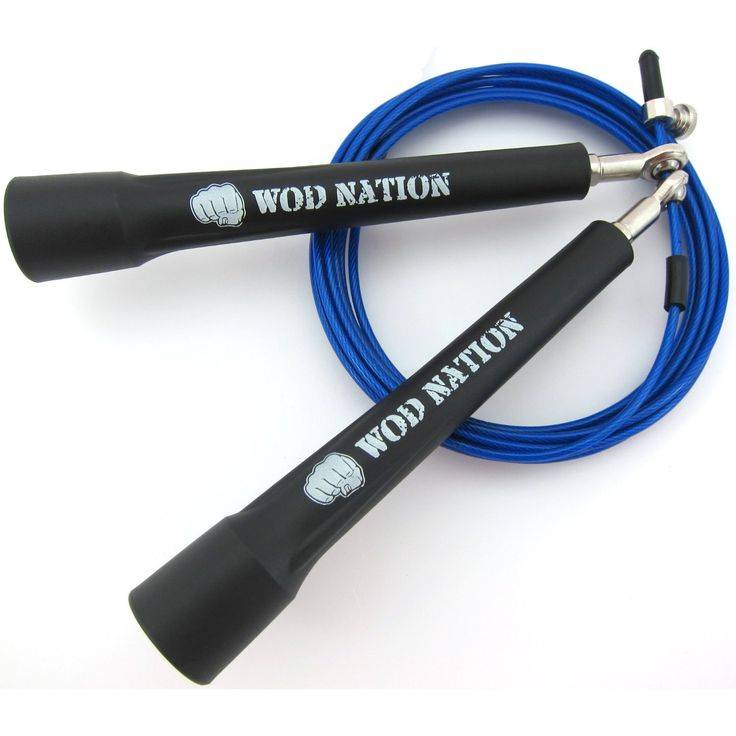
FAQ
Is it hard to learn criss cross rope jumping?
Yes, it is challenging but it is not impossible to learn. If you are determined and dedicated enough to master the skill, then you can achieve your goal. However, we would suggest that if you have never done this type of jump rope before, then start with single skips instead as it’s easier to learn.
Is cross jumping for professional jumpers only?
Cross jumping is not just for professional jumpers. It can be a great way to get in shape and improve your cardiovascular endurance, no matter your age or athletic ability. If you’re a beginner, don’t worry about the technique—just start slow and focus on getting the rhythm down. As you get more comfortable with it, you’ll be able to build up speed until you’re criss crossing like a pro!
Conclusion
Great job! You’ve just learned how to criss cross jump rope, a classic jump rope trick that’s fun and easy to do. Keep practicing your criss-cross jumps until you’ve mastered them. Once you’re comfortable with this trick, try adding some additional passes or even going back as you jump!
Let us know any thoughts or questions you have in mind in the comment section below.
Great job! You’ve just learned how to criss cross jump rope, a classic jump rope trick that’s fun and easy to do. Keep practicing your criss-cross jumps until you’ve mastered them. Once you’re comfortable with this trick, try adding some additional passes or even going back as you jump!
Let us know any thoughts or questions you have in mind in the comment section below.
Also read:
- Types Of Jump Ropes
- Jump Rope vs Other Exercises
- Single Unders
- How Long Should A Jump Rope Be
- Best Jump Rope For Double Unders
- Essential Gear For Functional Fitness
- Best Functional Fitness Jump Rope
References:
- Jump Rope Training: Balance and Motor Coordination in Preadolescent Soccer Players // PubMed: https://pubmed.ncbi.nlm.nih.gov/26664276/
- How to Do 8 Different Plyometric Exercises // Healthline.: https://www.healthline.com/health/exercise-fitness/plyometric-exercises
Why Trust Us?
With over 20 years in Olympic Weightlifting, our team does its best to provide the audience with ultimate support and meet the needs and requirements of advanced athletes and professional lifters, as well as people who strive to open new opportunities and develop their physical capabilities with us.
By trusting the recommendations of our certified experts in coaching, nutrition, dietology, and sports training programming, as well as scientific consultants, and physiotherapists, we provide you with thorough, well-considered, and scientifically proven content. All the information given in the articles concerning workout programming, separate exercises, and athletic performance, in general, is based on verified data. We ensure that you can rely on our professionals’ pieces of advice and recommendations that can be treated as personalized ones which will benefit you and fully meet your needs.
The product testing process is described in more detail here
Author: Ihor Shymechko
Pro Olympic Weightlifter, Coach
Best Results: Snatch – 208 kg,
C&J – 240 kg
Ihor has been a professional weightlifter since 1996, boasting over two decades of competition experience. His notable achievements include clinching the European Championship in 2009 and securing a silver medal in the 105kg division at the Senior World Championships in 2011. Ihor represented his country in the 2008, 2012, and 2016 Summer Olympics. After retiring from competitive weightlifting, he transitioned to coaching, leveraging his vast experience to guide athletes who now compete on both national and international stages.


